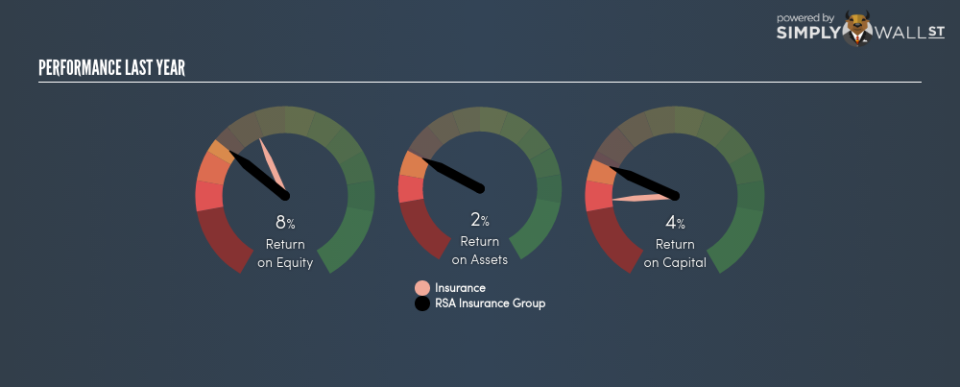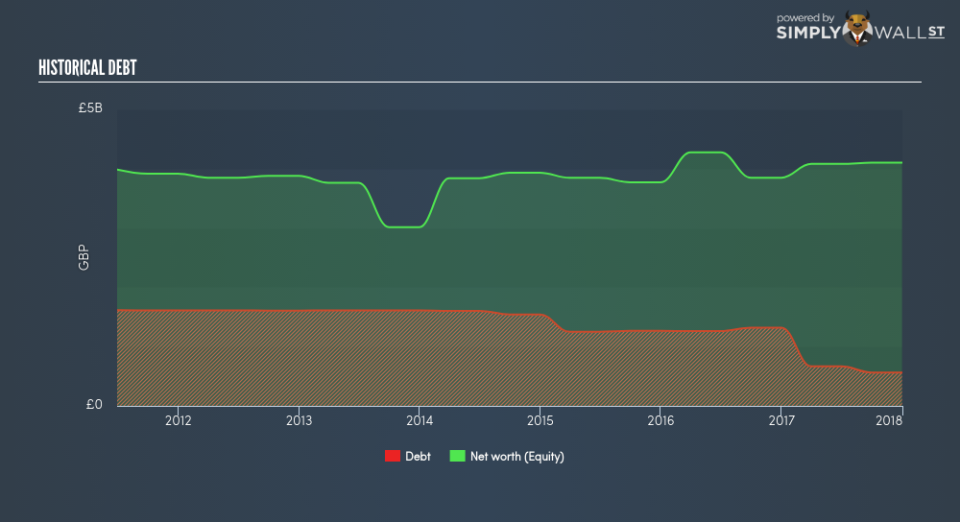With An ROE Of 7.85%, Has RSA Insurance Group plc’s (LON:RSA) Management Done Well?

This analysis is intended to introduce important early concepts to people who are starting to invest and want to begin learning the link between RSA Insurance Group plc (LON:RSA)’s return fundamentals and stock market performance.
RSA Insurance Group plc’s (LON:RSA) most recent return on equity was a substandard 7.85% relative to its industry performance of 12.19% over the past year. RSA’s results could indicate a relatively inefficient operation to its peers, and while this may be the case, it is important to understand what ROE is made up of and how it should be interpreted. Knowing these components could change your view on RSA’s performance. Metrics such as financial leverage can impact the level of ROE which in turn can affect the sustainability of RSA’s returns. Let me show you what I mean by this. View out our latest analysis for RSA Insurance Group
Breaking down ROE — the mother of all ratios
Return on Equity (ROE) weighs RSA Insurance Group’s profit against the level of its shareholders’ equity. An ROE of 7.85% implies £0.079 returned on every £1 invested. Generally speaking, a higher ROE is preferred; however, there are other factors we must also consider before making any conclusions.
Return on Equity = Net Profit ÷ Shareholders Equity
Returns are usually compared to costs to measure the efficiency of capital. RSA Insurance Group’s cost of equity is 8.28%. Since RSA Insurance Group’s return does not cover its cost, with a difference of -0.43%, this means its current use of equity is not efficient and not sustainable. Very simply, RSA Insurance Group pays more for its capital than what it generates in return. ROE can be split up into three useful ratios: net profit margin, asset turnover, and financial leverage. This is called the Dupont Formula:
Dupont Formula
ROE = profit margin × asset turnover × financial leverage
ROE = (annual net profit ÷ sales) × (sales ÷ assets) × (assets ÷ shareholders’ equity)
ROE = annual net profit ÷ shareholders’ equity
Essentially, profit margin shows how much money the company makes after paying for all its expenses. The other component, asset turnover, illustrates how much revenue RSA Insurance Group can make from its asset base. And finally, financial leverage is simply how much of assets are funded by equity, which exhibits how sustainable the company’s capital structure is. Since ROE can be inflated by excessive debt, we need to examine RSA Insurance Group’s debt-to-equity level. At 13.75%, RSA Insurance Group’s debt-to-equity ratio appears low and indicates that RSA Insurance Group still has room to increase leverage and grow its profits.
Next Steps:
ROE is a simple yet informative ratio, illustrating the various components that each measure the quality of the overall stock. RSA Insurance Group’s below-industry ROE is disappointing, furthermore, its returns were not even high enough to cover its own cost of equity. Although, its appropriate level of leverage means investors can be more confident in the sustainability of RSA Insurance Group’s return with a possible increase should the company decide to increase its debt levels. Although ROE can be a useful metric, it is only a small part of diligent research.
For RSA Insurance Group, I’ve put together three important factors you should look at:
Financial Health: Does it have a healthy balance sheet? Take a look at our free balance sheet analysis with six simple checks on key factors like leverage and risk.
Valuation: What is RSA Insurance Group worth today? Is the stock undervalued, even when its growth outlook is factored into its intrinsic value? The intrinsic value infographic in our free research report helps visualize whether RSA Insurance Group is currently mispriced by the market.
Other High-Growth Alternatives : Are there other high-growth stocks you could be holding instead of RSA Insurance Group? Explore our interactive list of stocks with large growth potential to get an idea of what else is out there you may be missing!
To help readers see pass the short term volatility of the financial market, we aim to bring you a long-term focused research analysis purely driven by fundamental data. Note that our analysis does not factor in the latest price sensitive company announcements.
The author is an independent contributor and at the time of publication had no position in the stocks mentioned.

 Yahoo Finance
Yahoo Finance 

